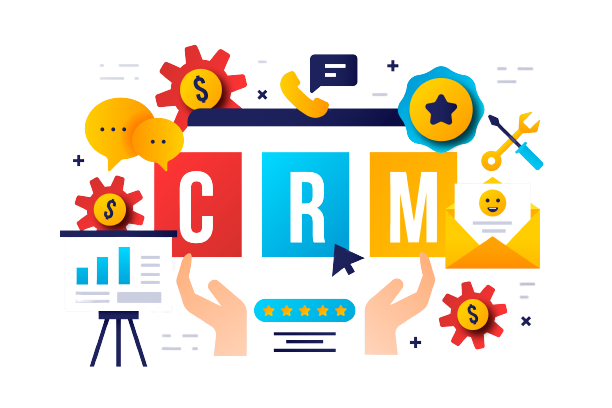
In the sales world, a well-defined sales pipeline is nothing short of a strategic masterpiece. It’s not just a visual representation of your sales process; it’s the backbone of your sales strategy. Understanding its importance is crucial for any business looking to thrive in a competitive marketplace. It provides clarity, efficiency, and accountability, enabling your sales team to navigate the complex sales journey effectively. Understanding its stages, creating one from scratch, and incorporating key elements are essential steps in building and managing your sales pipeline that drives revenue and fosters customer relationships. Let’s discuss why managing your sales pipeline is important and how you can do that!
What is a Sales Pipeline?

A sales pipeline is not just a static chart or a set of numbers; it’s a dynamic tool that provides a structured framework for managing and nurturing customer relationships. Let’s dive deeper into what a sales pipeline is and why it’s crucial for businesses of all sizes:
Think of a sales pipeline as a living, breathing entity within your business. It’s not a one-size-fits-all concept; rather, it’s adaptable and tailored to your specific sales process. The stages and steps within the pipeline can be customized to reflect the unique journey your customers take when considering and ultimately purchasing your products or services. Sales Pipeline is important due to several reasons such as:
- Visibility and Transparency: A well-structured sales pipeline offers clear visibility into the sales process. Sales managers and team members can see where each lead or deal stands at any given moment. This transparency ensures that nothing falls through the cracks, and everyone is on the same page.
- Effective Sales Management: Sales managers can use the pipeline to allocate resources wisely. By knowing which leads are in which stage, they can assign tasks, set priorities, and track progress more efficiently.
- Accurate Sales Forecasting: Accurate sales forecasting is crucial for budgeting, resource allocation, and business planning. A properly managed sales pipeline provides the data needed to make realistic sales predictions.
- Consistency in Customer Communication: The sales pipeline defines when and how your sales team interacts with leads and prospects. This consistency in communication ensures that no potential customer is left feeling neglected or overwhelmed with messages.
- Identifying Bottlenecks: By analyzing data within the pipeline, you can identify bottlenecks and areas where leads tend to get stuck or drop off. This insight allows you to make targeted improvements in your sales process.
- Empowering Decision-Making: Sales pipeline data empowers informed decision-making. For example, it can help you identify which marketing channels are most effective at generating leads or which sales tactics yield the highest conversion rates.
Why Is Sales Pipeline Customization Important?

Sales pipeline customization is crucial for several reasons, each contributing to the overall effectiveness and efficiency of your sales process:
- Alignment with Your Unique Business Model: Every business operates differently. Whether you’re in B2B or B2C sales, your sales pipeline should be tailored to align with your specific business model, industry, and target audience. A one-size-fits-all approach won’t capture the nuances of your sales journey.
- Tailored Customer Journey: Customization allows you to map out the stages of your sales pipeline according to the actual journey your customers take. Understanding your customers’ behaviors and decision-making processes is essential for creating a pipeline that resonates with them.
- Prioritizing the Right Leads: Not all leads are created equal. Customizing your pipeline enables you to define clear criteria for lead qualification. This ensures that your sales team focuses their efforts on the most promising leads, improving conversion rates and sales efficiency.
- Effective Communication Strategies: Different leads may require different communication strategies and messaging. Customization allows you to specify how and when your sales team interacts with leads at each stage. This tailored approach can lead to more meaningful conversations and better customer relationships.
- Optimized Resource Allocation: By customizing your pipeline, you can allocate resources strategically. You’ll have a clear understanding of where leads are in the pipeline, allowing you to allocate time and resources effectively and make informed decisions on staffing and marketing efforts.
- Data-Driven Decision-Making: Customized pipelines provide valuable data and insights into your sales process. You can track lead progression, conversion rates, and sales cycle times at each stage. This data empowers data-driven decision-making and continuous improvement.
- Adaptation to Market Changes: Markets evolve, and customer preferences change over time. Customization allows you to adapt your sales pipeline to stay in tune with these shifts. You can modify stages, criteria, and strategies to remain competitive and relevant.
- Improved Sales Team Performance: A customized pipeline can boost sales team morale and productivity. When team members see a pipeline that aligns with their workflow and customer interactions, they’re more likely to be engaged and motivated.
- Enhanced Customer Experience: A tailored pipeline ensures that customers receive personalized attention and relevant information throughout their journey. This enhances their overall experience, making them more likely to convert and become loyal customers.
- Maximized ROI: Customization helps you make the most of your resources by focusing on what works best for your business. By aligning your pipeline with your unique needs and goals, you’re more likely to achieve a higher return on investment (ROI) from your sales efforts.
Sales pipeline customization is essential because it allows you to adapt your sales process to your specific business model, target audience, and market conditions.
Therefore, you need a well-defined sales pipeline for your business for reasons like:
- Clarity and Focus: A defined sales pipeline offers clarity to your sales team. It helps them understand where each lead stands in the buying journey, enabling them to prioritize efforts effectively.
- Efficiency: With a well-structured pipeline, your team can work efficiently. They know what actions to take at each stage, reducing guesswork and redundant efforts.
- Forecasting: It allows for accurate sales forecasting. By analyzing the data at each stage, you can predict future sales, revenue, and potential bottlenecks.
- Improved Customer Relationships: A clear sales pipeline ensures that customers receive consistent communication and attention throughout their journey, enhancing the overall customer experience.
- Accountability: It holds your sales team accountable. They can’t afford to skip stages or neglect leads, as everything is transparent and trackable in the pipeline.
How to Create a Sales Pipeline from Scratch?

Creating a sales pipeline from scratch is a critical step for any business looking to establish an organized and effective sales process. Here’s a step-by-step guide on how to create a sales pipeline tailored to your business:
Step 1: Define Your Sales Process
- Identify Your Target Audience: Determine who your ideal customers are. Create buyer personas to understand their needs, pain points, and preferences.
- Map Your Sales Process: Outline the steps involved in your sales journey, from initial contact to closing deals. Consider stages like prospecting, qualification, engagement, proposal, closing, and follow-up.
- Set Clear Objectives: Define your sales goals, such as revenue targets, conversion rates, or the number of new customers you want to acquire. These goals will guide your pipeline development.
Step 2: Choose the Right Sales Pipeline Software
- Select CRM Software: Invest in pipeline CRM software to help you manage and track your sales pipeline efficiently. Popular CRM options include Salesforce, HubSpot CRM, and Zoho CRM.
- Customize Your CRM: Configure your CRM to align with your sales process and stages. Add custom fields, automation rules, and dashboards to suit your business needs.
Step 3: Identify Lead Sources
- Diversify Lead Generation: Determine how you’ll generate leads. Common lead sources include inbound marketing, outbound prospecting, referrals, trade shows, and social media.
Step 4: Lead Qualification
- Define Qualification Criteria: Establish clear criteria for identifying qualified leads. Consider factors like budget, authority, need, and timeline (BANT) to prioritize prospects.
Step 5: Create Sales Collateral
- Develop Sales Materials: Prepare relevant sales collateral, such as presentations, brochures, case studies, and product information, to support your sales team at various pipeline stages.
Step 6: Communication Plan
- Outline Communication Touchpoints: Define when and how your sales team will communicate with leads at each stage. Specify email templates, call scripts, and messaging guidelines.
Step 7: Automation and Integration
- Implement Automation: Use automation to streamline repetitive tasks within your pipeline, such as sending follow-up emails or assigning leads to specific sales reps.
- Integrate Tools: Integrate your CRM with other essential tools like email marketing platforms, calendars, and analytics software for a seamless workflow.
Step 8: Set Clear Metrics
- Define KPIs: Determine key performance indicators (KPIs) for each stage of your sales pipeline. These could include conversion rates, average deal size, sales cycle length, and revenue forecasts.
Step 9: Training and Onboarding
- Train Your Sales Team: Ensure your sales team is well-trained on using the CRM, understanding the pipeline stages, and following the communication plan effectively.
Step 10: Monitor and Refine
- Regularly Review Data: Continuously monitor your pipeline’s performance. Review pipeline reports, track lead progression, and analyze conversion rates to identify areas for improvement.
- Gather Feedback: Collect feedback from your sales team to understand pain points and challenges in the pipeline. Make adjustments as needed to address these issues.
- Adapt and Evolve: Be prepared to adapt your sales pipeline over time to align with changing market conditions, customer behaviors, and business goals.
Creating a sales pipeline from scratch is an ongoing process. It requires careful planning, the right tools, and a commitment to continuous improvement.
Key Elements of an Effective Sales Pipeline

An effective sales pipeline is a critical component of a successful sales process. It provides a structured framework for tracking and managing leads as they progress through various stages toward becoming paying customers. To build and maintain an effective sales pipeline, there are several key elements to consider:
- Clear Stages and Definitions: Define the stages of your sales pipeline clearly and ensure that everyone on your sales team understands them. Typical stages may include lead generation, lead qualification, prospecting, proposal, negotiation, and closing.
- Lead Generation: The first step in any sales pipeline is generating leads. This can be done through various marketing strategies, such as content marketing, social media, email campaigns, and events. Ensure a steady flow of potential customers entering your pipeline.
- Lead Qualification: Not all leads are created equal. Qualify leads to determine if they meet your ideal customer profile and have a genuine interest in your product or service. This prevents wasted time on leads that are unlikely to convert.
- Effective Communication: Maintain clear and consistent communication with leads throughout their journey. Timely responses to inquiries and personalized follow-ups are crucial for nurturing leads and building trust.
- Sales Tools and Technology: Invest in sales tools and technology, including CRM software, to streamline the management of your pipeline. CRM systems help track interactions, store important data, and automate tasks, ensuring that no lead falls through the cracks.
- Lead Scoring: Implement a lead scoring system to prioritize leads based on their likelihood to convert. Assign scores based on factors like engagement, budget, timeline, and fit with your product or service.
- Sales Collateral: Equip your sales team with the necessary sales collateral, such as product sheets, case studies, and presentations, to effectively communicate the value of your offerings at each stage of the pipeline.
- Sales Process Documentation: Document your sales process, including the specific actions and criteria for moving leads from one stage to the next. This creates consistency and enables new team members to onboard more efficiently.
- Sales Team Training: Provide ongoing training to your sales team to ensure they have the skills and knowledge needed to navigate the pipeline successfully. This includes training on product knowledge, objection handling, and negotiation.
- Pipeline Analytics: Regularly analyze the data in your pipeline to identify trends, bottlenecks, and areas for improvement. Metrics such as conversion rates, sales cycle length, and deal value can offer valuable insights.
- Lead Nurturing: Develop a lead nurturing strategy to engage with leads who are not yet ready to buy. This may involve providing educational content, offering webinars, or sending targeted emails to keep them interested.
- Sales Forecasting: Use historical data and pipeline analytics to forecast future sales. This helps in setting realistic sales targets and allocating resources effectively.
- Feedback Loop: Encourage open communication within your sales team and gather feedback on what’s working and what’s not in your sales pipeline. Adapt and refine your processes based on this feedback.
- Continuous Improvement: Sales pipelines should evolve to meet changing market dynamics and customer expectations. Regularly assess and refine your pipeline to ensure it remains effective.
- Collaboration with Marketing: Close alignment between sales and marketing is crucial. Marketing should provide high-quality leads that align with the target customer profile, and sales should provide feedback on lead quality.
Incorporating these key elements into your sales pipeline strategy will help you create a well-organized and efficient system for managing leads and ultimately driving revenue for your business.
Sales Pipeline Management Best Practices

Effective sales pipeline management is crucial for any business aiming to achieve consistent revenue growth. Here are some best practices to ensure that your sales pipeline operates at peak efficiency:
- Clear Sales Stages: Define clear and distinct sales stages within your pipeline. This helps both sales representatives and management understand where prospects stand in the sales process. Common stages include lead generation, qualification, presentation, negotiation, and closing.
- Lead Scoring: Implement a lead scoring system to prioritize leads based on their likelihood to convert. Assign scores based on factors such as demographics, engagement level, and behavior. This allows your sales team to focus their efforts on leads with higher conversion potential.
- Regular Pipeline Review: Hold regular pipeline review meetings to assess the health of your pipeline. Analyze metrics, discuss progress, and identify potential bottlenecks. This proactive approach ensures that issues are addressed promptly.
- Quality Over Quantity: Prioritize the quality of leads over quantity. A smaller, highly qualified pipeline is more valuable than a large, unqualified one. Focus on nurturing and converting the leads most likely to become loyal customers.
- Sales Training: Invest in ongoing training for your sales team. Equip them with the skills and knowledge they need to effectively manage leads, overcome objections, and close deals. Continuous improvement is key to pipeline success.
- Use CRM Software: Implement pipeline automation CRM to centralize and automate your pipeline management. CRM software helps track interactions, sets reminders, and provides valuable insights into the sales process.
- Sales Forecasting: Utilize historical data and pipeline metrics to create accurate sales forecasts. This allows you to set realistic sales targets, allocate resources effectively, and make informed business decisions.
Automating Your Sales Pipeline for Efficiency

Automation plays a pivotal role in streamlining your sales pipeline and enhancing efficiency. Sales pipeline CRM software automates your sales pipeline which is a strategic move that can significantly enhance efficiency, save time, and improve the overall effectiveness of your sales process. In this detailed explanation, we’ll explore how CRM software automation works and why it’s essential for modern businesses.
- Streamlined Lead Management
One of the primary benefits of automating your sales pipeline with CRM software is streamlined lead management. Here’s how it works:
- Lead Capture: CRM software allows you to capture leads from various sources, including your website, email campaigns, social media, and more. When a lead interacts with your business, their information is automatically recorded in the CRM system.
- Lead Assignment: The CRM software can automatically assign leads to the appropriate sales representatives based on predefined criteria, such as location, lead source, or product interest. This ensures that each lead is promptly attended to by the most qualified team member.
- Lead Scoring: Many CRM systems offer lead scoring capabilities, where leads are assigned scores based on their behavior and engagement. Higher scores indicate warmer leads who may be more ready to convert. Automation can help update and adjust lead scores as leads interact with your business.
- Automated Communication
Effective communication is at the core of successful sales pipeline management. CRM software automates communication in several ways:
- Email Automation: You can set up automated email campaigns within your CRM software. These campaigns can be triggered by specific lead actions or timed intervals. For example, you can automatically send a follow-up email after a lead downloads a resource from your website.
- Task Automation: CRM systems can automate routine tasks, such as sending reminders for follow-up calls or scheduling appointments. This ensures that important tasks are not overlooked.
- Notification Alerts: Automated notification alerts can inform sales representatives when a lead takes a specific action, such as opening an email or visiting your website. This real-time information allows for timely follow-ups.
- Personalization at Scale
CRM software allows you to personalize your interactions with leads and customers, even when dealing with a large volume of contacts:
- Dynamic Content: Many CRM systems support dynamic content that changes based on the recipient’s profile or behavior. This enables you to send personalized messages and recommendations to each lead or customer automatically.
- Lead Nurturing: Automation can be used for lead nurturing, where the CRM system sends relevant content or offers to leads over time, guiding them through the sales funnel. The content and timing can be personalized based on lead behavior.
- Data Management and Reporting
Automation in CRM software goes beyond communication and lead management; it also simplifies data management and reporting:
- Data Entry: Automation reduces manual data entry by capturing and updating lead information automatically. This minimizes errors and saves time.
- Reporting: CRM software provides automated reporting and analytics. You can easily track key metrics, such as conversion rates, sales velocity, and revenue generated from your pipeline. These reports help in making data-driven decisions.
- Integration Capabilities
Modern CRM software often integrates seamlessly with other tools and systems, further enhancing efficiency:
- Integration with Marketing Tools: Integration with marketing automation tools allows for a smooth handoff of leads from marketing to sales, ensuring a cohesive customer journey.
- Integration with Sales Tools: CRM systems can integrate with sales enablement tools, customer support software, and even accounting systems, creating a unified ecosystem that streamlines operations.
- Improved Customer Relationship Management
Ultimately, automating your sales pipeline with CRM software leads to improved customer relationship management:
- Personalized Customer Interactions: Automation allows for personalized interactions at scale, making customers feel valued and understood.
- Timely Follow-Ups: Automated alerts and reminders ensure that follow-ups happen on time, which is crucial for maintaining positive customer relationships.
- Enhanced Customer Insights: CRM systems capture valuable customer data that can be used to tailor your sales and marketing strategies to meet customer needs and preferences.
Conclusion
Automating your sales pipeline with CRM software is not just a modern convenience but a strategic imperative for businesses seeking sustainable growth and efficiency. By implementing pipeline CRM, businesses can:
- Streamline Lead Management: CRM software automates lead capture, assignment, and scoring, ensuring that leads are efficiently managed from initial contact to conversion.
- Automate Communication: Automation allows for personalized and timely communication with leads and customers, improving engagement and nurturing relationships.
- Personalize at Scale: Dynamic content and lead nurturing automation enable businesses to deliver personalized experiences to a large volume of leads and customers.
- Simplify Data Management: Automation reduces manual data entry, minimizes errors, and provides access to real-time reports and analytics for informed decision-making.
- Integrate Seamlessly: CRM systems can integrate with other tools and systems, creating a cohesive ecosystem that enhances operations across various departments.
- Improve Customer Relationship Management: Automation facilitates timely follow-ups, personalized interactions, and the gathering of valuable customer insights, ultimately leading to stronger and more enduring customer relationships.
By investing in a robust pipeline automation CRM system and fully leveraging its automation capabilities, businesses not only save time and resources but also position themselves for sustainable growth and success. CRM automation is a strategic enabler that empowers businesses to adapt to evolving market dynamics and customer preferences while delivering exceptional value to their clientele.